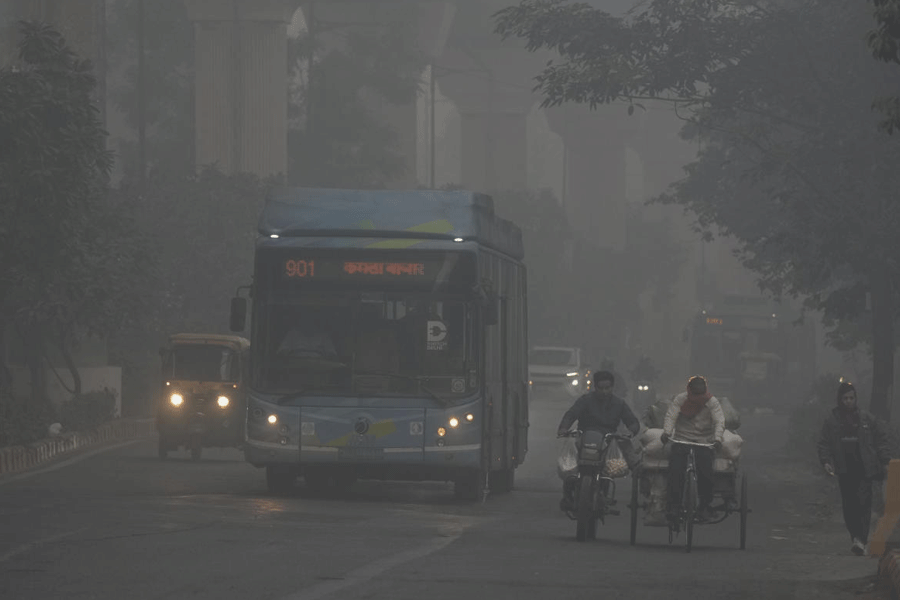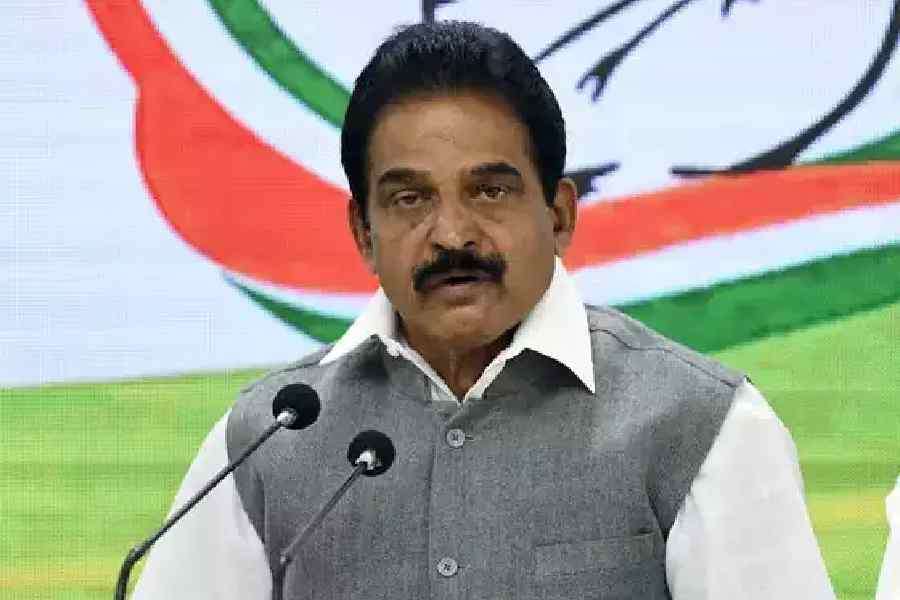The results of an election of momentous import on the future shape of Indian democracy would be announced in 10 days. One cannot rule out the possibility of an electoral upset, with INDIA replacing the NDA at the Centre. The possibility of such a stupefying electoral upset, though, still seems remote. Let us confine our analysis to two thresholds — more realistic and of crucial importance. i. Would the Bharatiya Janata Party cross the 272-seats majority mark? ii. Would the Congress cross 100 seats on its own?
To my mind, these thresholds contain a range of possibilities that might determine the future course of Indian democracy. In a technical sense, these thresholds provide us with four possibilities, but for clarity let us only consider the two polar cases.
The BJP wins an absolute majority and the Congress falls below the three-digit threshold.
This outcome might prove near catastrophic to our already enfeebled democratic institutions. In the course of the elections, we have seen the ruling party resort to not only highly communalised rhetoric, led by the prime minister, but also underhand manoeuvres (from Surat in Gujarat to Sambhal in Uttar Pradesh). The willingness to use the local police and the bureaucracy as instruments of the ruling party and the inability of institutions like the Election Commission of India to perform their constitutional roles have rung quite a few alarm bells.
What we are seeing, I propose, is the steady “fascistization” of the regime, a term borrowed from the study of fascist movements in Europe by the historian, Aristotle Kallis. Fascistization means the adoption of fascist techniques of governance: violent suppression of democratic movements, persecution of ethnic or religious minorities, sacralising the polity with a “politicized religion” and so on. For Kallis, fascism was a process which unfolded in an interactive dynamic between elite interests and fascist groups, covering not just inter-war Germany and Italy but also the ‘semi-fascist’ authoritarian regimes of Spain, Portugal, and Hungary. The key variable for Kallis was “common élite consensus on the benefits of controlled fascistization.” This variable determined how far the fascist regimes would go along on the arc of full-blown fascist dictatorship.
The last six months, beginning with the Ram temple’s inauguration, might make it clear that the accrual of fascist elements in the regime’s modes of governance is a process that is far from complete. A clearer picture of the regime’s utopia comes from Gujarat, a state run by a small coterie of industrialists, bureaucrats and ruling party leaders. The contempt for popular participation became explicit in the scandal in Surat which saw no electoral contest as the outcome had been pre-decided in favour of the BJP nominee after a mafia-like sit-down held at a luxury hotel. This is the kind of thing that happens in Vladimir Putin’s Russia.
We have also seen a growing appetite for fascistization of the regime among the BJP’s corporate and upper-class backers who have also been spooked by an Opposition politics geared towards social justice and egalitarianism. “The Billionaire Raj headed by India’s modern bourgeoisie is now more unequal than the British Raj headed by the colonialist forces,” a recent paper authored by the French economist, Thomas Piketty, and others concluded. This dizzying concentration of economic power has now come under sustained interrogation. The upshot is a supercharged “élite consensus on the benefits of controlled fascistization” — the key variable in the methodology of Kallis — which points towards a further destruction of the country’s democratic institutions.
A third successive rout for the Congress in the national elections would, in all likelihood, give way to its rapid disintegration and hasten its demise as the country’s primary Opposition force. If that happens, one might see a more Israel-like reconfiguration of the polity, with a dominant right-wing bloc at the Centre and a constellation of small centrist parties revolving around it.
Now let us come to the possibility that is the polar opposite.
The BJP falls significantly below the absolute majority and the Congress crosses the three-digit threshold.
In such a situation, even if the NDA cobbles up a majority coalition, we shouldn’t mistake the outcome to be a triumph for the BJP. It would constitute a loss of face for Prime Minister Narendra Modi and quash his aura of invincibility. It might spell a halt to the kind of imperial unilateralism — breaking Opposition parties and jailing their leaders — that has marked the BJP’s second term. It would provide a strong signal to other institutional actors (the media, judiciary, EC, bureaucracy, corporates) of the ‘radical indeterminacy’ of the trajectory of future politics. In other words, these actors would have to take into account the uncertainties and the contingencies of future political outcomes in their institutional decision-making.
A failure to reach the majority mark would damage Modi’s charismatic aura, check his imperial style of functioning, and fissure the elite coalitions. This would represent a kind of paradigmatic shift in national politics even in the absence of a change of guard at the Centre. If the Congress crosses the three-digit threshold, it might mark the revival of the Grand Old Party of Indian politics. Two years back, at the start of the Bharat Jodo Yatra, I had made the following points in my column for The Telegraph: “The Congress roadmap for 2024 is much like it was in 2004: project itself as the nucleus of a larger Opposition, and articulate a vision that exploits the vulnerability of the ruling regime.” “[T]he goal of the Congress in the 2024 elections appears to be (and ought to be) to cross 100 seats. It’s a difficult, but not unachievable, target.”
On the first point, the Congress has done quite well, especially in the last few months, in terms of contesting a much lesser share of seats than the last time and giving more space to its regional allies. In Uttar Pradesh, for example, the Congress has left the field open to the Samajwadi Party and fought the elections under the shared rubric of caste-based social justice. In a recent interview with the columnist-author, Neerja Chowdhury, Sharad Pawar hinted at a possible future merger with the Congress of his faction of the Nationalist Congress Party and, possibly, other parties: “In the next couple of years, several regional parties will associate more closely with the Congress. Or they may look at the option of merging with the Congress if they believe that is the best for their party.”
The space for regional parties occupying an autonomous third space has become progressively squeezed for a variety of reasons and one might well see quite a few of these parties fall by the wayside in the coming years. Among the parties whose future seems uncertain are the Janata Dal (Secular) in Karnataka, the Janata Dal (United) in Bihar, and the Biju Janata Dal in Odisha. None of these parties has a mass base or programmatic agenda that can help it survive once its ageing or discredited leadership passes the stage. We might include the Bharat Rashtra Samithi in Telangana, the Aam Aadmi Party in Delhi, and the Bahujan Samaj Party in UP in the second rung of threatened parties.
Whether the Congress can build itself to occupy the space left by these parties would depend on its performance in this election, specifically its ability to win 100 or more seats and emerge as the pole of the Opposition coalition.
The target appears possible. The Congress is widely expected to make major gains in Karnataka and substantial gains in Maharashtra and Telangana. Alongside, the party might garner a significant haul in the Hindi heartland states of Rajasthan, Madhya Pradesh, Chhattisgarh and Haryana where it had been wiped out in the 2019 polls.
The next phase of Indian politics might well revolve around Antonio Gramsci’s conception of hegemony and counter-hegemony. The former denotes an alliance run on behalf of the ruling classes with the co-option of the interests of other privileged classes. Crucially, this involves a “cultural hegemony” where the regime draws on the repertoire of symbols and discourses from a larger cultural matrix to form a formidable fortress of establishment power. Counter-hegemony denotes a reaction to such top-down hegemony where a bottom-up coalition is assembled on behalf of the underprivileged and marginalised sectors of the polity drawing on an alternative cultural matrix centred on a social struggle for justice.
Asim Ali is a political researcher and columnist










